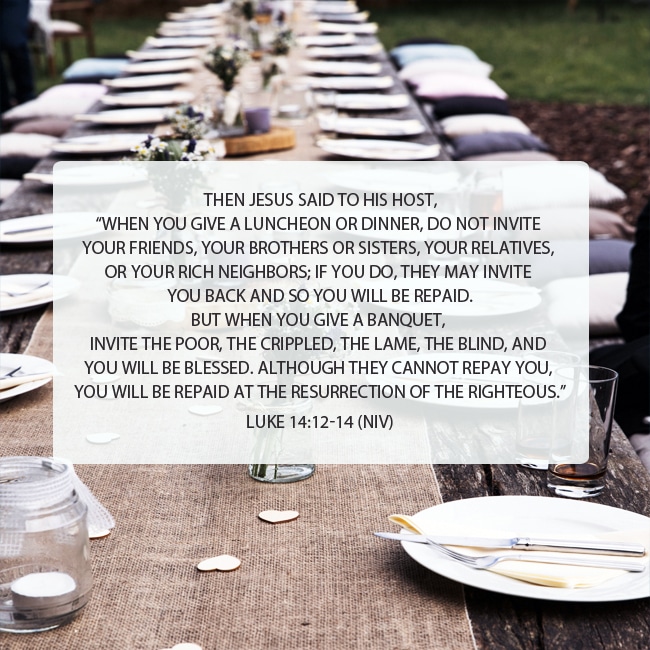Personal Discoveries for Impactful Preaching: The Five Focal Points
Personal Discoveries for Impactful Preaching: The Five Focal Points
– Dr. Thomas Bartlett, Rockbridge, ‘08 –
Can you think back to the last, really great sermon you’ve heard? I’m sure the one you preached last week was amazing. But I’m talking about a message that captivated your mind, that caused you to think, and then it hit you right in the heart too. What was it about that message that pulled you in and made you want to listen? How did that message draw you in so much so that your mind was so focused on it? Well, I believe that several things happened, and what might surprise you is that some preachers can deliver messages with impact but may not be able to tell you how they did it. For some, it just comes naturally. You see there’s both an art to preaching and a science. Some are naturally gifted, but they can’t tell you how because it’s a gift. Some can tell you how but may lack the gifting. Now I believe you can work on both the art and the science of preaching, but the unseen factor, of course, is the Holy Spirit. No message can achieve life change without Him.
After my undergraduate program, I treated preaching very academically. Three statements based on the text and a poem thrown in were my approach. Upon entering and completing Rockbridge Seminary, I was equipped with so much more. Once I moved away from preaching as an academic exercise to preaching for life change, I began to see impact like never before. Rick Warren’s “Preaching for Life Change” conference material was so foundational for me that I’ve gleaned from it over and over. Since that time, I’ve been exposed to other great resources, and in this first of three articles on preaching, I want to share with you what I believe can take any preacher to a new level of engagement and impact. In this article we’re not going to discuss the mechanics of exegesis and hermeneutics. We’re not going to discuss the prayer emphasis preaching requires, or the needed infilling of the Holy Spirit. I’m working from the position that you know these things. In this article we will look at a format for a sermon, and the mechanics behind that for an impact that has helped me, our preaching team, and countless others.
In 2006, Andy Stanley and Lane Jones published a fable called Communicating for a Change.[1] The format in that book, along with the Preaching for Life Change notes, are the basis of what I’m about to share with you. Simply put, Stanley and Jones laid out a pathway to deliver sermons with great impact. Whether I’m preaching a topical message, preaching line-by-line through a passage, or even a narrative passage, I always follow this pathway. If you’ve heard of the “ME, WE, GOD, YOU, WE” format, let this be a refresher. If you’ve never heard of it, let it be an eye-opening experience.
The “ME, WE, GOD, YOU, WE” format allows people to join you on a journey by finding common ground with an issue built upon the teachings of Scripture. It puts the preacher/teacher on a level field with the listener. Before you dismiss this, this is not a new approach to preaching or preparation. Richard Mayhue gives a great analogy:
The relationship of seasoning and sauces to gourmet cooking parallels the role of introductions, illustrations, and conclusions in preaching. The main meal, or the message, should never be eclipsed by secondary features; nonetheless, these garnishings can dramatically enhance the flavor/interest level of a meal/message well prepared in other respects.[2]
Breaking Down the Five Sections of ME, WE, GOD, YOU, WE
The ME section of the sermon is the opening introduction. In this section, you will introduce yourself and the topic of the day by showing a personal struggle or challenge with the topic. This introduction of the topic is done discreetly; it’s purely to open people’s minds. Recently I preached on a biblical foundation for money management. In my ME section, I shared about when I was young and got my first credit card and maxed it out. I then had the idea of getting a loan to pay it off. This, of course, felt like a brilliant move until I ran up the credit-card to limit once again. This left me with both a loan payment and a maxed-out credit card. In my message I was vulnerable personally, and an easy target for humor which I poured out sufficiently on myself. I didn’t introduce the Scripture just yet, but the idea of the issue at hand, and led me to the WE section.
In the WE section we find common ground with our audience. On the topic of finances, after sharing my failures, I turned with a more serious tone and asked, “Have you ever made a dumb decision like that?” Of course, many shook their heads, and some responded verbally, “Yes!” In essence, I told them, “I have a problem, and you have the same problem.” The WE section takes some thought, and I devise this portion of my message after I’ve studied my Scripture and have prepared my outline. I must think, not like a preacher who merely gives out facts and scriptures, but as a person who deals with everyday problems. Wayne McDill said, “Preaching to people where they live will have to begin in the thinking of the preacher. He will have to shift his thoughts out of church world thinking into real-world thinking.”[3] In the ME and WE sections I expose that my problem is also your problem, which leads us to the next part of the message, the GOD section.
The God section is where all of your study and creative points are merged together. For me, this is where the Preaching for Life Change material is seen. In the case of teaching biblical financial principles, I used Old Testament Proverbs and New Testament Parables to help teach truths from God’s Word. I reflect upon the timeless truths from God’s Word, and then I shape them for my message. I do this by making my points actionable by placing a verb in each point instead of a traditional message which tries to insert application at the end. As Rick Warren taught, “If the point of the message is application, make the application your points.” (Preaching for Life-Chance Conference) Application is so important, but my approach early on often left me without time to include it. Byran Chapel writes:
Application fulfills the obligations of exposition. Application is the present, personal consequence of spiritual truth. Without application, a preacher has no reason to preach, because truth without actual or potential application fulfills no redemptive purpose. . . The duty that God requires is the “so what” of expository preaching that causes application.[4]
Actionable points ensure an application that is based on the teaching of God’s Word. To create actionable points, I add a verb to each point, and then I ensure that the length of each point is about the same to make it easier for the listener to remember. Now the point is to be clear and actionable. To try to be too catchy at the cost of clarity will not bring the desired result. Martin Lloyd Jones gave wise advice here, “Do not be too clever. . . do not be too smart. This has been a real snare to many preachers.”[5] My outline includes life transformational points that are based on my text, the actual text of Scripture, and my supporting Scripture for that topic. This becomes the outline that I use to write my manuscript.
In essence, to this point, my message has been conveyed: I have a problem (ME), my problem is your problem (WE), and here is what God’s Word says about the problem that we both have (GOD). These three sets the table for the YOU section beautifully.
In the YOU section, I point out that we both have this problem–I have it, you have it, we all have it. We’ve just heard what God’s Word says about this problem we both share. With emphasis and looking straight at the listeners I ask, “What will YOU do about it?” Many times, I pause and wait. Now I certainly say it in various ways, but this moment is impactful. I never use the, “We all ought to do something” phrasing. This section isn’t a, “We all,” or “People should,” approach. This section of the message is the “What will YOU do” moment. It’s personal and sharp, said in love, which is the point to lead to personal and life-changing decisions. This is where we ask people to listen to the Holy Spirit and decide to apply the actionable points they’ve just heard. “Preaching without application may serve the mind, but preaching with application results in service to Christ.”[6]
We now move to the last portion of the message, which is the second WE. Stanley and Jones refer to this section as the “Imagine section.” It goes like this, “Imagine that every person in this room made the choice today to do as God has instructed in His Word. Can you see how that would change the world?”
The other necessary component in every message is a clear Gospel presentation of the death, burial, and resurrection of Jesus Christ. That presentation can come at any point in the message where it fits best for impact. I’ve offered it up front as a foundation for the message, I’ve closed with a response to accept salvation, and I’ve used a Gospel presentation at every step over the years. I simply ensure that somewhere between ME, WE, GOD, YOU, WE, there’s an opportunity to hear about the loving sacrifice of Jesus Christ to whosoever will listen.
I hope this approach to preaching is helpful to you as you rightly divide the Word of God. In my next blog, we will look at “The Power of Planning in Preaching.”
[1] Andy Stanley, Jones, Lane, Communicating For A Change, Multnomah: Sisters, 2006.
[2] John MacArthur, et. al. Rediscovering Expository Preaching, Word: Dallas, London, Vancouver, Melbourne, 1992, p. 242.
[3] Wayne McDill, The 12 Essential Skills for Great Preaching, Brodman and Holman: Nashville, 1994, p. 103
[4] Bryan Chapell, Christ Centered Preaching, Baker Academic: Grand Rapids, 2005, p. 210.
[5] Martyn Lloyd Jones, Preaching & Preachers, Zondervan: Grand Rapids, 1974, p. 208.
[6] Chapell, p. 54.






